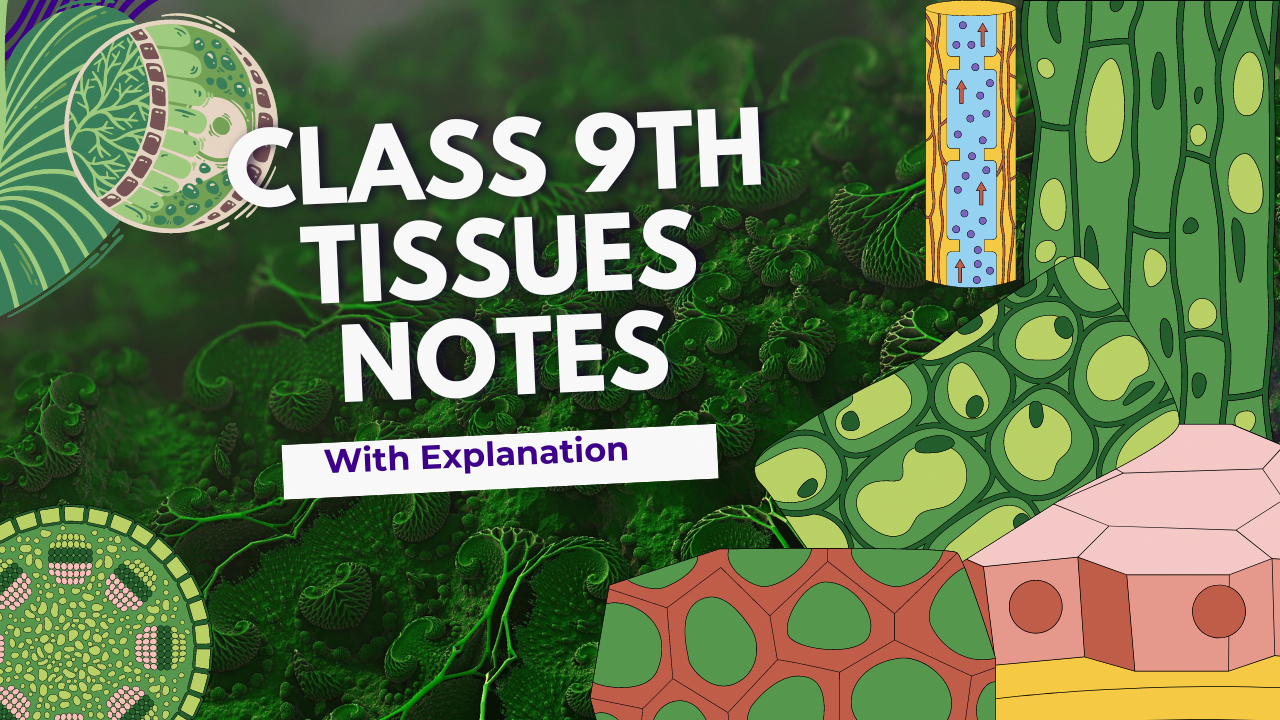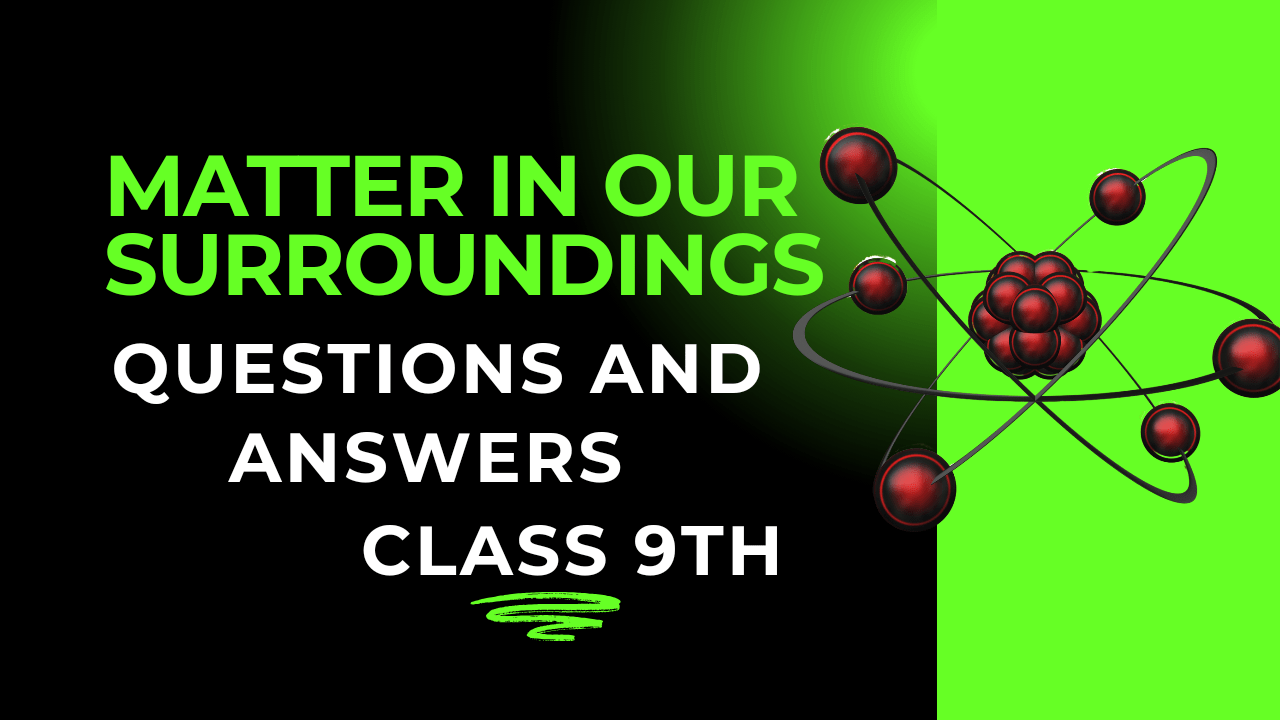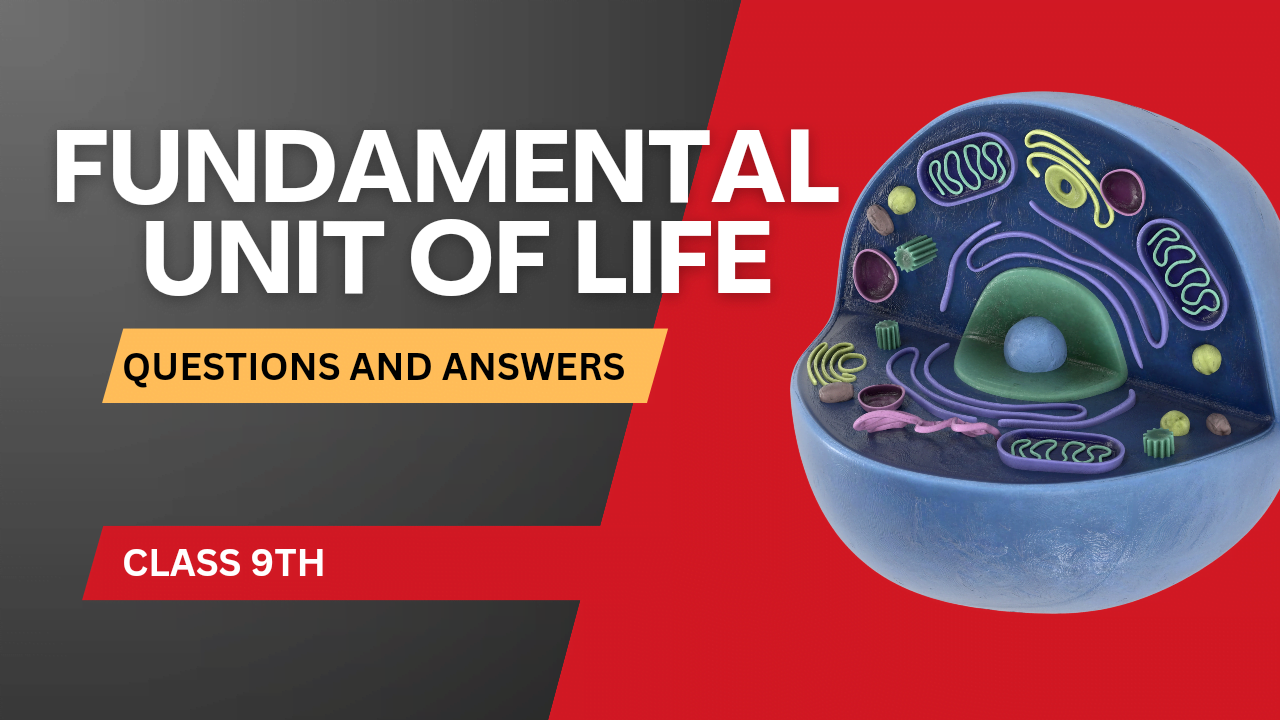Plant Tissues: Structure, Types, and Functions
Plant tissues are essential components that determine the structure and function of plants. They are broadly classified into two categories: meristematic tissues, which are involved in growth, and permanent tissues, which are specialized and non-dividing. This post explores these tissues in detail, highlighting their structure, types, and functions.
1. Meristematic Tissue
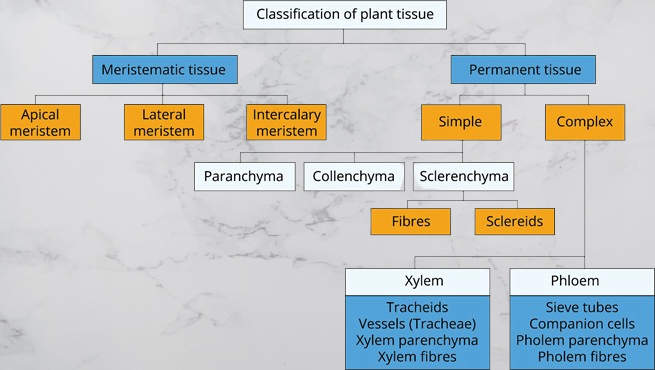 >
>Meristematic tissues are regions in plants where cells actively divide. They are crucial for growth and development, allowing plants to expand and adapt to their environment.
Structure of Meristematic Tissue
- Cell Characteristics: Meristematic cells are small, with a dense cytoplasm, thin cellulose walls, and prominent nuclei. These cells are isodiametric, meaning they are roughly spherical, and lack vacuoles, which is significant for their high metabolic activity and division rate.
- Lack of Vacuoles: The absence of vacuoles in meristematic cells provides more space for the nucleus and other organelles involved in cell division, supporting rapid and continuous growth.
Types of Meristematic Tissue
- Apical Meristem
- Location: Found at the growing tips of roots and shoots. In shoots, they are located in the terminal bud; in roots, they are at the root apex.
- Function: Apical meristems are responsible for primary growth, leading to an increase in the length of the plant. They contribute to the formation of primary tissues like the epidermis, cortex, and primary vascular tissues.
- Activities: Produce cells that differentiate into various tissues and contribute to the formation of leaves, flowers, and branches.
- Lateral Meristem
- Location: Present along the sides of stems and roots, typically forming a cylinder around the plant organs.
- Function: Lateral meristems are involved in secondary growth, increasing the girth of the plant. They produce secondary tissues that add to the thickness of stems and roots.
- Types:
- Vascular Cambium: Produces secondary xylem (wood) and secondary phloem.
- Cork Cambium: Forms the periderm, a protective outer layer that replaces the epidermis in woody plants.
- Intercalary Meristem
- Location: Located at the base of leaves or internodes, often in grasses and other monocots.
- Function: Promotes regrowth and elongation of plant parts like leaves and stems, especially after they have been cut or grazed. This allows grasses to recover quickly from grazing or mowing.
Functions of Meristematic Tissue
- Growth: Enable plants to grow in length (primary growth) through the activity of apical meristems, and in thickness (secondary growth) through lateral meristems.
- Regeneration: Facilitate the healing of wounds and the replacement of damaged tissues, particularly in roots and stems.
- Differentiation: Provide undifferentiated cells that can develop into various specialized cells, contributing to the plant’s ability to form complex organs and tissues.
2. Permanent Tissue
Permanent tissues consist of cells that have ceased to divide and have specialized to perform distinct functions. These tissues are categorized into simple permanent tissues and complex permanent tissues.
Simple Permanent Tissue
Simple permanent tissues are made up of a single type of cell. These cells have differentiated to perform specific functions like storage, photosynthesis, and structural support.
 >
>- Parenchyma
- Structure: Parenchyma cells are generally large, with thin cell walls, and often contain a central vacuole. They have living protoplasts and can vary in shape.
- Types:
- Chlorenchyma: Contains chloroplasts and is involved in photosynthesis. Found in leaves and other green parts.
- Aerenchyma: Contains large air spaces and is found in aquatic plants, providing buoyancy and facilitating gas exchange.
- Function:
- Storage: Stores nutrients and water.
- Photosynthesis: Involved in photosynthesis in leaves and other green tissues.
- Wound Healing: Can dedifferentiate and divide to aid in wound healing and regeneration.
- Collenchyma
- Structure: Collenchyma cells are elongated with unevenly thickened cell walls. They are living cells that provide mechanical support and flexibility.
- Types:
- Angular Collenchyma: Thickening at the corners of cells.
- Lamellar Collenchyma: Thickening on tangential walls.
- Function: Provides support to young and growing parts of plants such as stems and leaves without restricting growth. It offers flexibility, allowing plants to bend without breaking.
- Sclerenchyma
- Structure: Sclerenchyma cells are dead at maturity, with very thick, lignified cell walls. They come in two forms: fibers and sclereids.
- Types:
- Fibers: Long, slender cells that provide tensile strength and are found in stems and around vascular bundles.
- Sclereids: Short, irregular cells that add hardness to seed coats and nutshells.
- Function: Provides rigidity and strength to mature parts of the plant, such as stems, bark, and seed coats.
Complex Permanent Tissue
Complex permanent tissues consist of more than one type of cell, working together to perform specific functions. They are crucial for transport and support in plants.
- Xylem
- Structure: Composed of tracheids, vessels, xylem parenchyma, and xylem fibers.
- Tracheids: Long, tapered cells that conduct water and provide structural support.
- Vessels: Shorter, wider cells that form continuous tubes for efficient water transport.
- Xylem Parenchyma: Involved in storage and lateral transport of water.
- Xylem Fibers: Provide additional support.
- Function: Conducts water and dissolved minerals from roots to leaves and other parts of the plant. Also contributes to the mechanical strength of the plant.
- Phloem
- Structure: Consists of sieve tubes, companion cells, phloem parenchyma, and phloem fibers.
- Sieve Tubes: Elongated cells that form channels for transporting nutrients.
- Companion Cells: Support the metabolic functions of sieve tubes.
- Phloem Parenchyma: Stores nutrients and aids in lateral transport.
- Phloem Fibers: Provide structural support.
- Function: Transports the products of photosynthesis, mainly sugars, from leaves to other parts of the plant for growth, storage, and energy.
Animal Tissues: Structure, Types, and Functions
Animal tissues are groups of cells that work together to perform specific functions, essential for the body’s structure and function. They are classified into four main types: epithelial, connective, muscular, and nervous tissues. Each type has a unique role in maintaining the organism’s homeostasis and overall function.
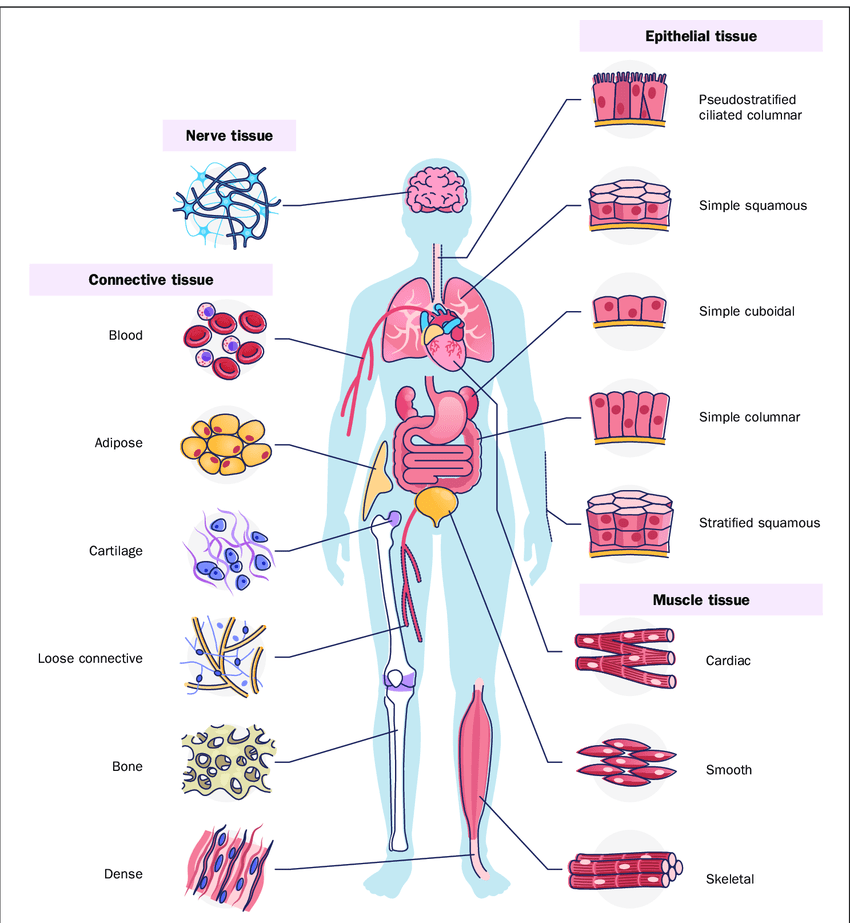
1. Epithelial Tissue
Epithelial tissues cover body surfaces and line internal organs and cavities. They form barriers and are involved in absorption, secretion, and protection.
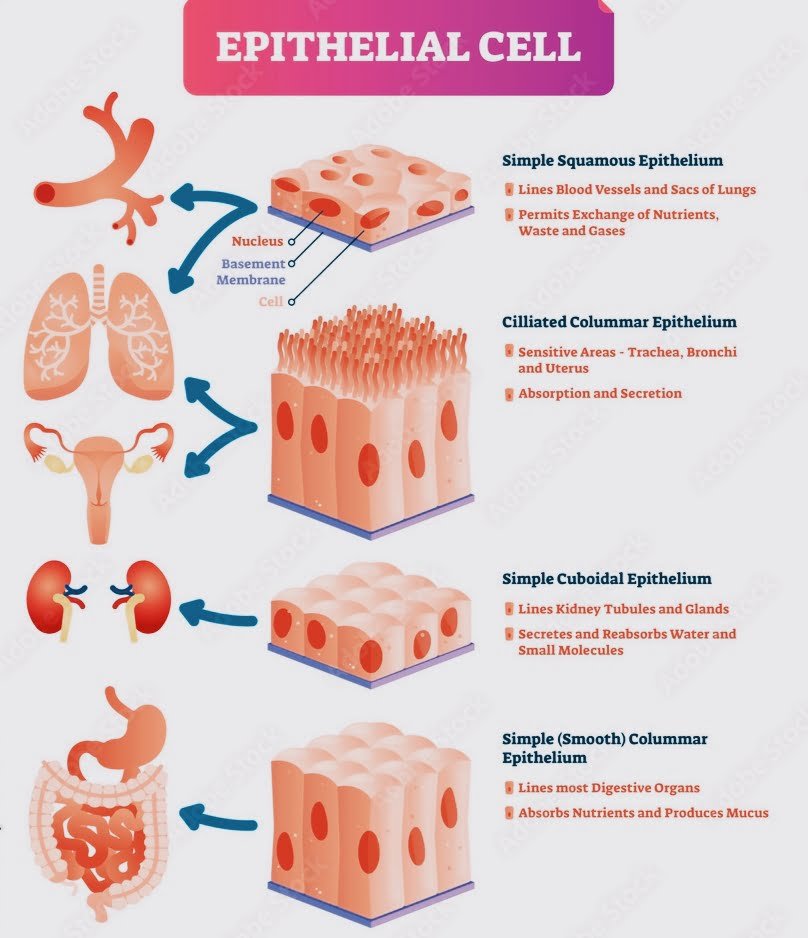
Structure of Epithelial Tissue
- Cell Characteristics: Epithelial cells are closely packed with minimal intercellular space, forming continuous sheets. They are held together by tight junctions and are often supported by a basement membrane.
- Cell Shapes: Cells can be squamous (flat), cuboidal (cube-shaped), or columnar (tall and cylindrical).
- Cell Layers: Can be simple (one layer) or stratified (multiple layers).
Types of Epithelial Tissue
- Simple Epithelium
- Structure: Single layer of cells.
- Types:
- Simple Squamous Epithelium: Thin, flat cells that facilitate diffusion and filtration. Found in alveoli and blood vessels.
- Simple Cuboidal Epithelium: Cube-shaped cells involved in secretion and absorption. Found in kidney tubules and glandular ducts.
- Simple Columnar Epithelium: Tall cells specialized in absorption and secretion. Found in the digestive tract lining.
- Stratified Epithelium
- Structure: Multiple layers of cells.
- Types:
- Stratified Squamous Epithelium: Multiple layers of squamous cells, providing protection against abrasion. Found in the skin, mouth, and esophagus.
- Stratified Cuboidal and Columnar Epithelium: Rare and found in some glandular ducts.
- Transitional Epithelium: Multiple layers that can stretch, found in the urinary bladder.
- Pseudostratified Epithelium
- Structure: Appears layered due to varying cell heights but is actually a single layer.
- Function: Often ciliated and involved in secretion and movement of mucus. Found in the respiratory tract.
Functions of Epithelial Tissue
- Protection: Forms protective barriers on the body surface and lining internal organs.
- Absorption: Absorbs nutrients and other substances, especially in the digestive tract.
- Secretion: Secretes enzymes, hormones, and other substances.
- Excretion: Facilitates the excretion of waste products.
Functions of epithelial tissue

2. Connective Tissue

Connective tissues provide support, bind tissues together, and protect organs. They are characterized by a large amount of extracellular matrix.
Structure of Connective Tissue
- Cell Characteristics: Cells are fewer in number and are embedded in an extracellular matrix consisting of fibers (collagen, elastic, reticular) and ground substance.
- Fibers: Collagen (strength), elastic (flexibility), and reticular (support).
Types of Connective Tissue
- Loose Connective Tissue
- Structure: Contains a loosely arranged network of fibers and cells.
- Types:
- Areolar Tissue: Contains collagen and elastic fibers, providing support and flexibility. Found under epithelial layers.
- Adipose Tissue: Stores fat, provides insulation, and cushioning. Found beneath the skin and around organs.
- Reticular Tissue: Composed of reticular fibers forming a framework for organs like the spleen and lymph nodes.
- Dense Connective Tissue
- Structure: Contains densely packed fibers.
- Types:
- Dense Regular Tissue: Collagen fibers are aligned in parallel, providing tensile strength. Found in tendons and ligaments.
- Dense Irregular Tissue: Collagen fibers are randomly arranged, providing strength in multiple directions. Found in the dermis of the skin.
- Cartilage
- Structure: Chondrocytes (cartilage cells) embedded in a firm matrix.
- Types:
- Hyaline Cartilage: Smooth and glassy, found in joints, nose, and trachea.
- Elastic Cartilage: Contains elastic fibers, providing flexibility. Found in the ear and epiglottis.
- Fibrocartilage: Contains thick collagen fibers, providing strength and shock absorption. Found in intervertebral discs.
- Bone
- Structure: Osteocytes (bone cells) in a rigid matrix of collagen and mineral salts.
- Types:
- Compact Bone: Dense and provides strength and structure. Forms the outer layer of bones.
- Spongy Bone: Lighter, porous, and found in the ends of long bones and inside other bones.
- Blood
- Structure: Liquid connective tissue with cells suspended in plasma.
- Components:
- Red Blood Cells: Transport oxygen.
- White Blood Cells: Fight infections.
- Platelets: Involved in clotting.
Functions of Connective Tissue
- Support: Provides structural support to the body and organs.
- Protection: Cushions and protects organs.
- Storage: Stores energy (adipose tissue) and minerals (bone).
- Transport: Blood transports nutrients, gases, and wastes.
3. Muscular Tissue
Muscular tissues are responsible for movement and contraction. They contain specialized cells capable of shortening and generating force.
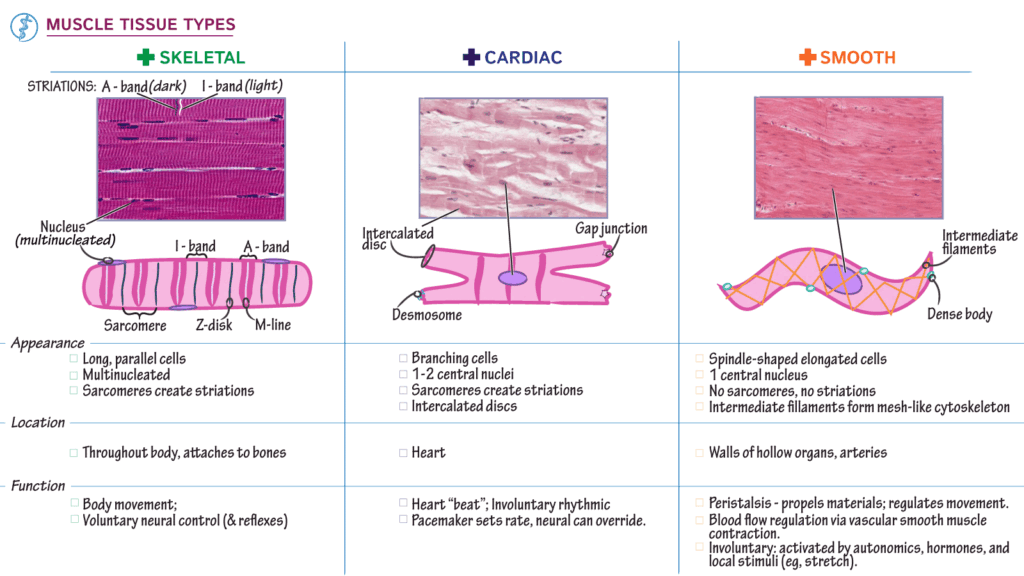
Structure of Muscular Tissue
- Cell Characteristics: Muscle cells, also called muscle fibers, are elongated and contain myofibrils composed of actin and myosin filaments.
Types of Muscular Tissue
- Skeletal Muscle
- Structure: Long, cylindrical, multinucleated cells with striations (bands).
- Function: Voluntary movement controlled by the nervous system. Attached to bones and responsible for body movements.
- Location: Attached to the skeleton.
- Cardiac Muscle
- Structure: Branched, striated cells with a single nucleus, connected by intercalated discs.
- Function: Involuntary contraction, pumping blood throughout the body.
- Location: Found in the walls of the heart.
- Smooth Muscle
- Structure: Spindle-shaped, non-striated cells with a single nucleus.
- Function: Involuntary movement, controlling the movement of substances through hollow organs.
- Location: Found in the walls of hollow organs like the intestines, blood vessels, and bladder.
Functions of Muscular Tissue
- Movement: Facilitates voluntary and involuntary movements.
- Support: Maintains posture and body position.
- Heat Generation: Produces heat through muscle activity.
4. Nervous Tissue
Nervous tissues are specialized for communication and control. They generate and transmit electrical impulses.

Structure of Nervous Tissue
- Cell Characteristics: Consists of neurons and supporting glial cells.
- Neurons: The primary cells responsible for transmitting nerve impulses. Consist of a cell body, dendrites, and an axon.
- Glial Cells: Provide support, protection, and nutrition to neurons.
Types of Nervous Tissue
- Neurons
- Structure:
- Cell Body: Contains the nucleus and organelles.
- Dendrites: Receive signals from other neurons.
- Axon: Transmits impulses away from the cell body to other neurons or muscles.
- Function: Conduct nerve impulses for communication, sensory input, and motor output.
- Glial Cells
- Types:
- Astrocytes: Provide structural support and regulate the chemical environment.
- Oligodendrocytes: Form the myelin sheath in the central nervous system.
- Schwann Cells: Form the myelin sheath in the peripheral nervous system.
- Microglia: Act as phagocytes, cleaning up debris and dead cells.
Functions of Nervous Tissue
- Communication: Transmits electrical signals throughout the body.
- Control: Coordinates and controls body functions and responses.
- Sensory Reception: Processes sensory input from the environment.
Conclusion
Animal tissues are specialized to perform distinct functions essential for the survival and well-being of organisms. Epithelial tissues protect and line surfaces, connective tissues support and bind, muscular tissues facilitate movement, and nervous tissues enable communication and control. Understanding these tissues provides insight into the complex organization and functionality of animal bodies.
Exercises on Plant and Animal Tissues
Understanding tissues helps us learn how plants and animals grow and function. Here’s a simple guide with answers to common questions about tissues, organized for easy learning.
1. What is a Tissue?
Answer: A tissue is a group of cells that look similar and work together to do a specific job in the body.
2. What Makes Up Xylem Tissue?
Answer: Xylem tissue in plants helps transport water and minerals. It has four parts:
| Element | Description |
|---|---|
| Tracheids | Long cells that help move water up the plant. |
| Vessels | Tube-like structures that carry water and nutrients. |
| Xylem Parenchyma | Stores food and helps in the transport of water. |
| Xylem Fibers | Provides strength and support to the plant. |
3. How Are Simple Tissues Different from Complex Tissues?
Answer: Simple tissues are made of one type of cell, while complex tissues are made of different types of cells. Here’s a comparison:
| Aspect | Simple Tissues | Complex Tissues |
|---|---|---|
| Composition | One type of cell | Different types of cells |
| Examples | Parenchyma, Collenchyma, Sclerenchyma | Xylem, Phloem |
| Functions | Storage, support, strength | Transport of water (xylem) and food (phloem) |
| Location | Found in various parts of plants like stems, roots, leaves | Found in vascular bundles (xylem and phloem) |
4. Differences Between Parenchyma, Collenchyma, and Sclerenchyma
Answer: These are types of simple tissues in plants. Here’s how they differ:
| Feature | Parenchyma | Collenchyma | Sclerenchyma |
|---|---|---|---|
| Cell Wall | Thin, flexible | Thickened at corners | Very thick, hard |
| Function | Stores food and water, does photosynthesis | Provides support and flexibility | Provides strength and rigidity |
| Location | Found in leaves, stems, roots, and fruits | Found in stems and leaves | Found in seeds, nuts, and hard parts |
| Cell Type | Living cells | Living cells | Dead cells with lignin |
5. Functions of Stomata
Answer: Stomata are tiny openings on leaves that:
| Function | Description |
|---|---|
| Gas Exchange | Allows plants to take in carbon dioxide and release oxygen. |
| Transpiration | Helps control water loss by releasing water vapor. |
| Regulation | Opens and closes to regulate the intake of gases and water loss. |
6. Types of Muscle Fibers
Answer: Muscle fibers help in movement and support different functions in animals. Here are the types:
| Feature | Striated Muscle (Skeletal) | Unstriated Muscle (Smooth) | Cardiac Muscle |
|---|---|---|---|
| Appearance | Striped, cylindrical | No stripes, spindle-shaped | Striped, branched |
| Control | Voluntary (we control it) | Involuntary (works automatically) | Involuntary (works automatically) |
| Location | Found in limbs, attached to bones | Found in internal organs (stomach, intestines) | Found only in the heart |
| Function | Helps in body movements | Controls movements inside organs | Pumps blood throughout the body |
7. Function of Cardiac Muscle
Answer: Cardiac muscle is special muscle tissue in the heart that:
| Function | Description |
|---|---|
| Pumping Blood | Contracts to pump blood around the body. |
| Rhythmic Contractions | Works without tiring to keep the heart beating. |
| Involuntary Control | Works automatically without us having to think about it. |
8. Differences in Muscle Types
Answer: Here’s a comparison of the three types of muscle fibers:
| Feature | Striated Muscle (Skeletal) | Unstriated Muscle (Smooth) | Cardiac Muscle |
|---|---|---|---|
| Structure | Long, cylindrical, with stripes | Spindle-shaped, no stripes | Branched, with stripes |
| Control | Voluntary | Involuntary | Involuntary |
| Location | Attached to bones (arms, legs) | Walls of internal organs | Heart |
| Function | Movement of the body | Movement within organs | Pumping blood |
9. Diagram of a Neuron
Answer: A neuron is a nerve cell that sends messages in the body. It has:
| Part | Description |
|---|---|
| Cell Body | The main part with the nucleus and organelles. |
| Dendrites | Branches that receive signals from other neurons. |
| Axon | A long part that sends messages to other neurons. |
| Synapse | Junction where the axon meets another neuron. |
10. Name These Tissues
(a) Tissue lining the inner mouth: Epithelial Tissue
(b) Tissue connecting muscle to bone: Tendon
(c) Tissue that carries food in plants: Phloem
(d) Tissue that stores fat: Adipose Tissue
(e) Connective tissue with fluid: Blood
(f) Tissue in the brain: Nervous Tissue
11. Identify the Tissues
Answer: Here’s how to identify the types of tissues:
| Object | Type of Tissue |
|---|---|
| Skin | Epithelial Tissue |
| Bark of Tree | Protective Tissue (Cork) |
| Bone | Connective Tissue |
| Lining of Kidney Tubule | Epithelial Tissue |
| Vascular Bundle | Complex Tissue (Xylem and Phloem) |
12. Where is Parenchyma Tissue Found?
Answer: Parenchyma tissue is found in:
| Location | Function |
|---|---|
| Inside Stems and Roots | Stores nutrients and water. |
| Leaves | Helps in photosynthesis. |
| Fruits | Stores food and contributes to the juicy part. |
13. Role of Epidermis in Plants
Answer: The epidermis is the outer layer of the plant that:
| Function | Description |
|---|---|
| Protection | Shields the plant from injury and infections. |
| Water Conservation | Prevents water loss. |
| Gas Exchange | Allows exchange of gases through stomata. |
14. How Does Cork Protect Plants?
Answer: Cork, or bark, protects plants by:
| Feature | Description |
|---|---|
| Waterproof | Prevents water loss with its waxy coating. |
| Protection | Shields the plant from external damage and pests. |
| Insulation | Helps in temperature regulation. |
15. Chart of Permanent Tissues
Answer: Here’s a chart showing the types of permanent tissues:
| Permanent Tissue | Simple | Complex |
|---|---|---|
| Parenchyma: Stores food. | Xylem: Carries water. | |
| Collenchyma: Supports plant. | Phloem: Carries food. | |
| Sclerenchyma: Provides strength. |
